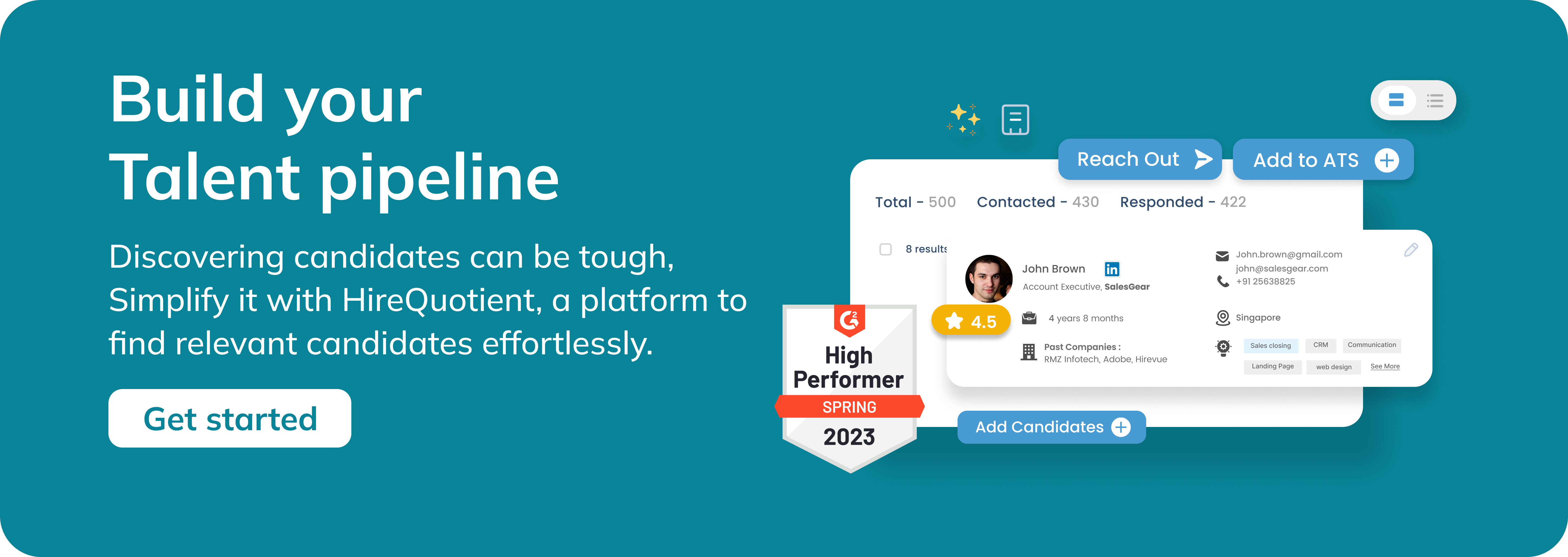How Does a Hiring Pool Work?
Published on September 4th, 2023
Staying ahead of the competition is crucial in the fierce game of recruitment. One strategy that has gained prominence in recent years is the use of hiring pools. But what exactly is a hiring pool, and how does it work? This comprehensive guide is designed to provide recruiters and hirers with a deep understanding of the concept and the best practices for leveraging it effectively.
What Is a Hiring Pool?
A hiring pool, also known as a talent pool or candidate pool, is a dynamic repository of potential candidates who have shown interest in working for your organization. These candidates may not be actively applying for specific job openings but are willing to be considered for future opportunities. A well-managed hiring pool can be a game-changer for recruiters and hirers
How Does a Hiring Pool Work?
Understanding the inner workings of a hiring pool is essential for harnessing its potential. Here's a step-by-step breakdown of how it operates:
1. Candidate Sourcing
Recruiters employ various strategies to source potential candidates for the hiring pool. These strategies can include:
Job Boards: Posting openings on job boards to attract interested candidates.
Networking: Leveraging professional networks, industry events, and referrals to identify potential candidates.
Resume Databases: Collecting resumes and applications from previous job postings.
Social Media: Engaging with potential candidates on platforms like LinkedIn.
2. Candidate Engagement
Once candidates are identified, the next step is to engage candidates. This involves:
Initial Contact: Initiating communication with potential candidates to gauge their interest and suitability.
Database Entry: Storing candidate information in a secure database, along with details about their skills, qualifications, and preferences.
Permission: Obtaining explicit consent from candidates to be part of the hiring pool and receive future job alerts or communications.
3. Pool Maintenance
A well-maintained hiring pool is dynamic and up-to-date. To achieve this:
Regular Updates: Periodically reach out to candidates to confirm their interest and update their information.
Segmentation: Categorize candidates based on their skills, experience, and preferences, making it easier to match them with suitable roles.
Data Management: Employ applicant tracking systems (ATS) or recruitment software to manage and organize candidate data efficiently.
4. Matching Candidates to Openings
When a new job opening arises, recruiters can search the hiring pool for potential matches. This process involves:
Keyword Search: Using specific keywords to identify candidates with relevant skills or qualifications.
Matching Algorithms: Leveraging AI-powered tools to automatically match candidates to job requirements.
Candidate Outreach: Contacting potential candidates to express interest and gauge their availability and interest in the position.
5. Selection and Hiring
Once suitable candidates are identified, the hiring process proceeds:
Interviews: Conducting interviews, assessments, and evaluations to assess candidate suitability.
Offer and Onboarding: Extending offers, facilitating onboarding, and welcoming the selected candidate to the organization.
Why Should You Use a Hiring Pool?
Now that you understand how a hiring pool works, let's explore why it's a valuable resource for recruiters and hirers:
Faster Time-to-Hire: Since candidates in the pool have already expressed interest, the hiring process can be expedited, reducing time-to-hire.
Cost Savings: Sourcing candidates from the pool can be more cost-effective than advertising for new positions.
Quality Candidates: Candidates in the pool are often pre-qualified and have a genuine interest in the organization, leading to higher-quality hires.
Proactive Recruitment: Hiring pools enable proactive recruitment, allowing organizations to identify and engage with talent even before specific job openings arise.
Enhanced Candidate Experience: Candidates appreciate being considered for multiple roles within the organization, creating a positive candidate experience.
Best Practices for Leveraging a Hiring Pool
To make the most of your hiring pool, consider these best practices:
Data Privacy: Ensure candidate data is stored and managed in compliance with data privacy regulations.
Regular Communication: Stay in touch with candidates to keep them informed and engaged.
Personalization: Tailor your communication and job recommendations to each candidate's preferences and qualifications.
Feedback: Provide constructive feedback to candidates, even if they are not selected for a role.
Diversity and Inclusion: Prioritize diversity and inclusion in your hiring pool to foster a more diverse workforce.
Technology: Utilize applicant tracking systems (ATS) and AI-powered tools to streamline hiring pool management.
A hiring pool and applicant pool is a powerful resource that empowers recruiters and hirers to proactively source and engage with potential candidates. By understanding how it works and implementing best practices, organizations can optimize their talent acquisition strategies, reduce time-to-hire, and secure top talent more efficiently. Leveraging a hiring pool is not just a trend; it's a strategic advantage in the competitive world of recruitment.
Hire the best without stress
Ask us how
Never Miss The Updates
We cover all recruitment, talent analytics, L&D, DEI, pre-employment, candidate screening, and hiring tools. Join our force & subscribe now!
Stay On Top Of Everything In HR



